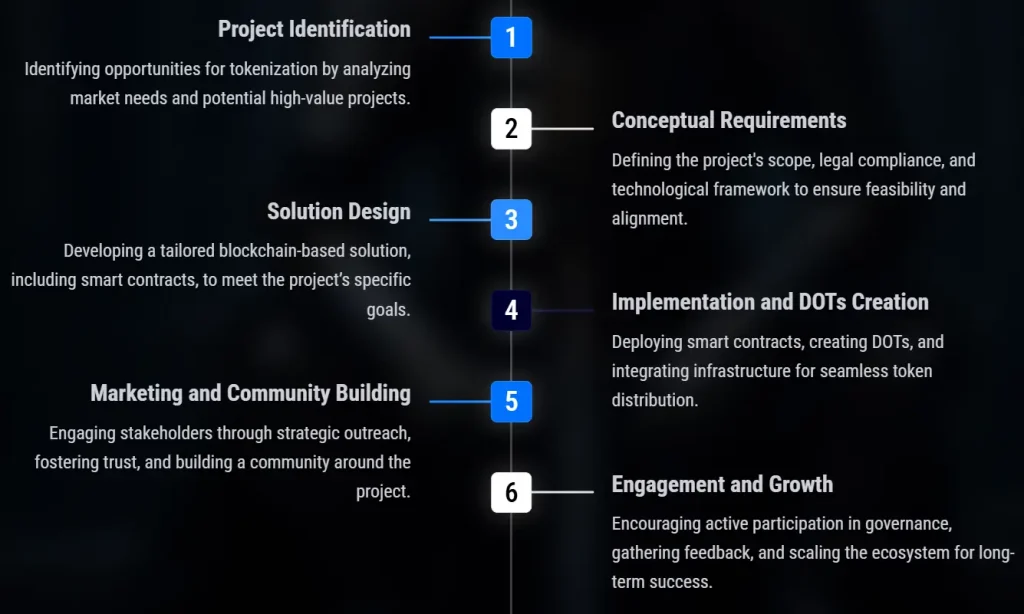Element 1: Project Identification
This initial stage involves the identification of potential projects suitable for tokenization using DOTs. It requires thorough market research and analysis to determine the viability and demand for tokenization in specific sectors such as real estate, art, digital goods, or other assets. The goal here is to identify opportunities where the use of DOTs can add value, innovate, and create accessible investment opportunities.
Element 2: Conceptual Requirements
Once a project has been identified, the next step involves defining the conceptual requirements. This includes outlining the scope of the project, the specific needs it aims to fulfill, and how DOTs can be structured to meet these needs. Considerations during this phase include legal compliance, marketability, and the technological framework required to ensure the project’s success and integrity.
Element 3: Solution Design
In this stage, the conceptual requirements are translated into a detailed solution design. This involves choosing the right blockchain platform that aligns with the project’s security, scalability, and performance needs. The design phase also includes the development of smart contracts that will govern the DOTs, ensuring they encapsulate all the necessary rules and functionalities such as issuance, transaction rules, and benefit distribution.
Element 4: Implementation and DOTs Creation
The implementation stage is where the DOTs are actually created. This involves the development, testing, and deployment of smart contracts on the chosen blockchain. The DOTs are then issued and prepared for distribution. This phase may also involve setting up the infrastructure for the DOT sale, including integration with wallets and exchanges for ease of access and liquidity and the managing of the related benefits.
Element 5: Marketing and Community Building
With the DOTs implemented, the focus shifts to marketing the tokenized project and building a community around it. This involves outreach through various channels such as social media, community forums, and direct marketing to potential investors and users. Educational content, demos, and interactive sessions can help in engaging the community and demonstrating the benefits and uses of the DOTs forged for that particular solution or project.
Element 6: Engagement and Growth
The final stage of the process involves ongoing engagement and scaling. Holders of the DOTs are encouraged to actively participate in the governance and decision-making processes, helping steer the project’s future direction. This stage also focuses on analyzing feedback, optimizing the system, and expanding the project’s reach to new markets or sectors. The goal is to create a sustainable ecosystem that continues to grow and evolve, benefiting all stakeholders involved. This is especially true for tokenized initiatives like our Collection: Medals of Honor. Each project/initiative has its own peculiarities.





